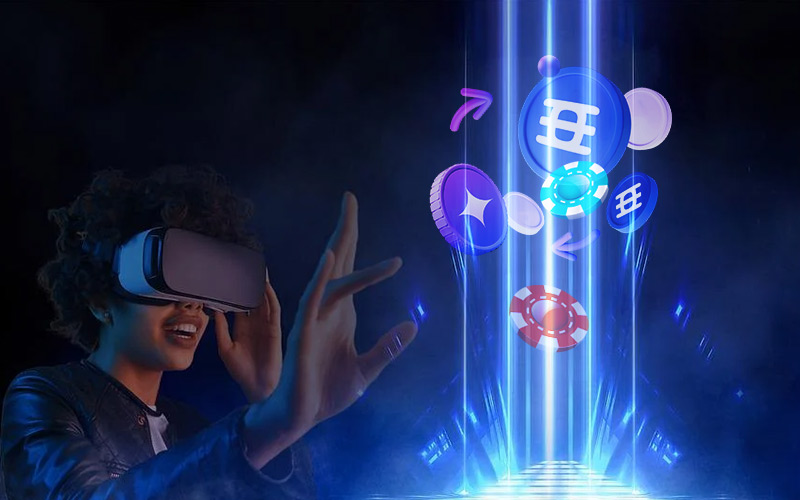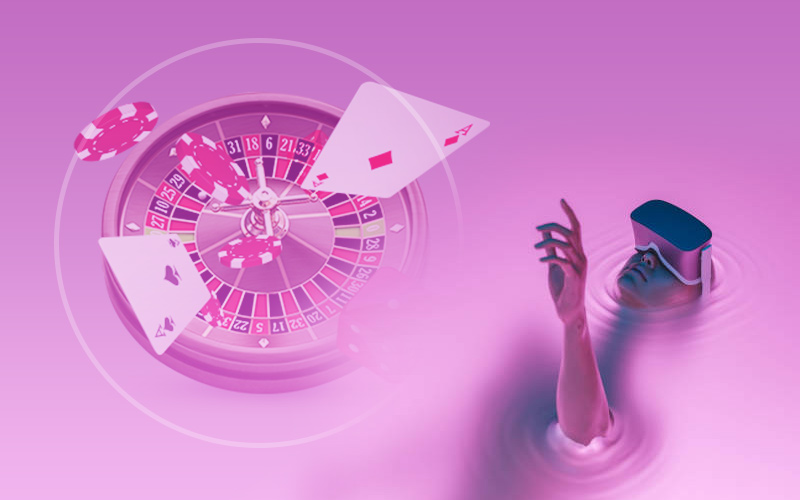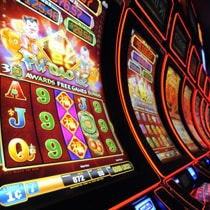How Virtual Reality Can Rewrite Online Casinos
iGaming has moved far beyond flat screens and static lobbies. A new layer has formed where play feels closer to a night on the casino floor than to a website. It is not only about sharper graphics or faster loading. Presence, movement, and shared space change how a session unfolds and how long players stay.
Virtual reality sits at the centre of this shift. Headsets place the user inside a designed world, while software adds sound, scale, and interaction in real time. The result is a setting that feels social, custom, and alive. Operators see fresh ways to build loyalty, and players find experiences that feel less like clicking and more like being there.

Gaminator presents a detailed breakdown of how virtual reality has already changed online gambling and how it will influence the niche in the future. Our experts demonstrate the benefits of innovation and provide a detailed understanding of revenue growth through the right configuration.
Why VR Casinos Excel
Interest grows when a product solves old problems freshly. Virtual reality addresses two long-standing gaps in online gambling. The first is the absence of a sense of place and the lack of natural social interaction. The second is the user control over style and pace, which helps sessions feel personal rather than generic.
Solutions that VR gambling provides:
- A social layer that feels real. Avatars meet, speak, and react in the same room, which turns solitary play into a shared night out.
- Personal worlds by design. Users shape an identity, pick a venue theme, and curate small details, so the space reflects taste rather than a fixed template.
- Higher engagement through interaction. Gestures, proximity, and eye-level cues replace menu clicks, which keeps attention steady and the flow intuitive.
- Longer sessions with less fatigue. Natural movement and ambient sound reduce the flatness of standard lobbies, so players do not feel stuck at a screen.
- A bridge between land-based and online. Familiar table etiquette and floor layouts meet digital perks that ease newcomers into remote play and keep the charm of a physical casino.
Virtual venues are not limited by physical constraints or floor plans. Designers can add layers that enhance clarity, tempo, and strategy without breaking the mood. The result is a setting that informs the player, as it also keeps the thrill intact.
Extras that only VR can deliver:
- dynamic worlds and shifting layouts;
- on-the-spot guidance and subtle tips;
- floating odds, heat-maps, and strategy overlays.
Immersion is the sum of how you move, hear, and respond within the scene. When these signals align, the brain no longer treats play as a page and starts reading it as a place.
Core layers that make VR interaction feel natural:
Movements and Gestures
Users can walk across the hall, approach a slot, or take a seat at the table. Motion tracking turns hands into tools, so you pull a lever, toss dice, or stack chips. Each action mirrors a real gesture, which makes routine steps simple and satisfying.
Audio-Visual Realism
Everything in the lobbies looks detailed, from the table felt to soft lighting. Dealers act within the space, and the background hums like a busy floor. This blend of sight and sound anchors the experience and sustains attention across a full session.
Real-Time Social Layer
Players do not sit alone behind static avatars. Voice chat supports quick exchanges, while facial cues and body language add nuance. The room responds to presence, so conversation and play feel immediate and not delayed.
The Tech Stack behind VR Gambling

A convincing virtual casino is not a single product. It is a mix of synchronised hardware, networks, and software. Each layer pushes interaction closer to natural behaviour and keeps visuals stable and smooth.
A concise tour of the core building blocks:
Headsets
Modern devices, ranging from standalone units like the Meta Quest 2 to tethered systems like the HTC Vive, place players inside three-dimensional scenes with accurate head tracking. Standalone gear lowers the barrier to entry, while PC-powered rigs deliver higher fidelity for complex halls and busy tables.
Connectivity
Low latency is the lifeline of convincing play. With advanced broadband and 5G, scenes stream in high definition, voice chat stays crisp, and gestures register without delay. Stable throughput keeps rooms responsive even when crowds grow and effects intensify.
Future on the Horizon
Full-body suits, vests, and tactile controllers promise feedback beyond vibration. A shoulder tap from a nearby avatar or a distinct pulse when chips land can deepen presence. As these add-ons mature, touch will complement sight and sound to refine the sense of being there.
Adoption Hurdles
Simple promises do not guarantee scale. VR gambling still faces limits that slow mainstream use. Some are technical, others are financial or legal, and each can break immersion if left unaddressed.
Key obstacles operators and players must keep in view:
- upfront hardware expense for headsets and controllers;
- high production costs for rich, optimised 3D environments;
- performance issues such as lag, frame drops, or blurry scenes;
- network instability that disrupts voice, gestures, and dealer flow;
- comfort concerns, including motion sickness and fatigue;
- limited content breadth compared with standard online catalogues;
- regulatory uncertainty in multiple jurisdictions and markets.
How the Future Remains Strong
Despite the hurdles, the development points in one direction. Hardware matures, networks improve, and content teams learn how to design spaces that feel natural and efficient. Each upgrade removes friction and brings the format closer to everyday use.
What shows the positive trajectory:
- Lower entry costs. New headset generations arrive at friendlier prices, and standalone devices cut the need for expensive PCs, which expands the addressable audience.
- Mass-market experiences. Streamlined onboarding, lighter avatars, and smarter UX reduce complexity, so first-time users can join rooms, find tables, and play without lengthy tutorials.
- Better infrastructure. High-bandwidth connections and low-latency 5G keep scenes fluid, voice stable, and gestures precise, which turns short trials into regular sessions.
- Broader content pipelines. Studios refine production workflows and reuse assets, so more tables, slots, and social spaces reach players with steady quality.
- Better peripherals and tools. Haptics, trackers, and development kits are becoming increasingly capable, which enhances immersion and reduces build times for new experiences.
The Main Things about VR in Online Gambling
Virtual reality adds place, presence, and people to digital casinos, which turns routine play into a shared experience. Growth appears solid, with the market projected to reach approximately $1 billion by the end of 2025 and an average annual expansion rate of 18%.
Key aspects about virtual reality in gambling:
- VR closes the gap between land-based floors and online rooms with restored social contact and a sense of space.
- Personal avatars and themed venues boost attachment, deepen involvement, and extend session length.
- A modern stack of headsets, low-latency networks, and emerging haptics delivers smooth scenes and natural interaction.
- Scale is held back by device prices, technical stability, content scope, and regulatory complexity across markets.
- The path forward includes cheaper hardware, mass-market UX, and better connectivity to push VR establishments toward the mainstream.
Check the information used to contact us carefully. It is necessary for your safety.
Fraudsters can use contacts that look like ours to scam customers. Therefore, we ask you to enter only the addresses that are indicated on our official website.
Be careful! Our team is not responsible for the activities of persons using similar contact details.



